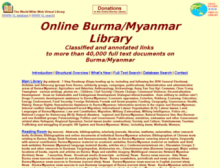Resource information
... The first commercial small-scale oil palm plantations were introduced to Myanmar in 1926 covering 120 ha. In the 1980’s the European Economic Community and Swiss
government implemented a palm oil project to stimulate growth in the sector. As of 2014 401,813 ha have been allocated and 134,539 ha planted. The government
target is to plant 282,470 ha by 2030. The land is allocated to 44 companies, comprising 43 local companies and one Foreign Direct Investment. Three foreign
companies have joint-ventures with local companies. Although much land is now planted, there appears to be significant scope to improve yields with better technical
capacity and planting material. Down-stream, there are five mills owned by three companies with crude palm oil (CPO) processing capacity varying from 1.5 to 60 tonnes of fresh fruit bunch per hour (Zaw Win, 2014). Expansion of mills currently faces financing constraints.
The main driver for expansion is to meet domestic demand for edible oil; there are 60 million people in Myanmar consuming 400-500,000 metric tonnes of edible oil (palm
oil, sesame and ground nut). Myanmar is importing palm oil; in 2012 this was 330,000 metric tonnes with a value of $376 million from Indonesia and Malaysia. Self sufficiency in edible palm oil is a national target, but local production is currently dwarfed by these imports.
Oil palm plantations in Myanmar are principally found within a narrow belt of coastal lowlands in Myeik and Kawthaung Districts (Figure 1). Donald et al. 2014 report that potential productivity in this area is low by international standards (Figure 2) due to climatic conditions.
As a contribution to assessing the long term commercial viability of Myanmar’s oil palm industry, as well as its social and environmental impacts, we surveyed the agroecological conditions where it presently occurs and where it could be further developed. The Agritech Portal of Tamil Nadu Agricultural University states that,
“Oil palm requires evenly distributed annual rainfall [of at least] 2000 mm without a defined dry season. In areas with a dry spell, deep soil with high water holding capacity and a shallow water table augmented with copious irrigation will satisfy the water requirement of the oil palm.
“Temperature can be a limiting factor for oil palm production. Best oil palm yields are obtained in places where a maximum average temperature of 29o-33oC and minimum average temperature of 22o-24oC are available. Higher diurnal temperature variation causes floral abortion in regions with a dry season.”
Within Myanmar, annual rainfall, the presence of a distinct dry season (Figure 3) and elevation (an indicator of local variation in diurnal temperature range) already limit the
area suitable for plantations. Sandy loam soils restrict the potential for irrigation and make the requirements for fertilizer high. Across the entire country, the duration and
reliability of the wet season has decreased as climate variability has increased, and this trend is likely to continue...


